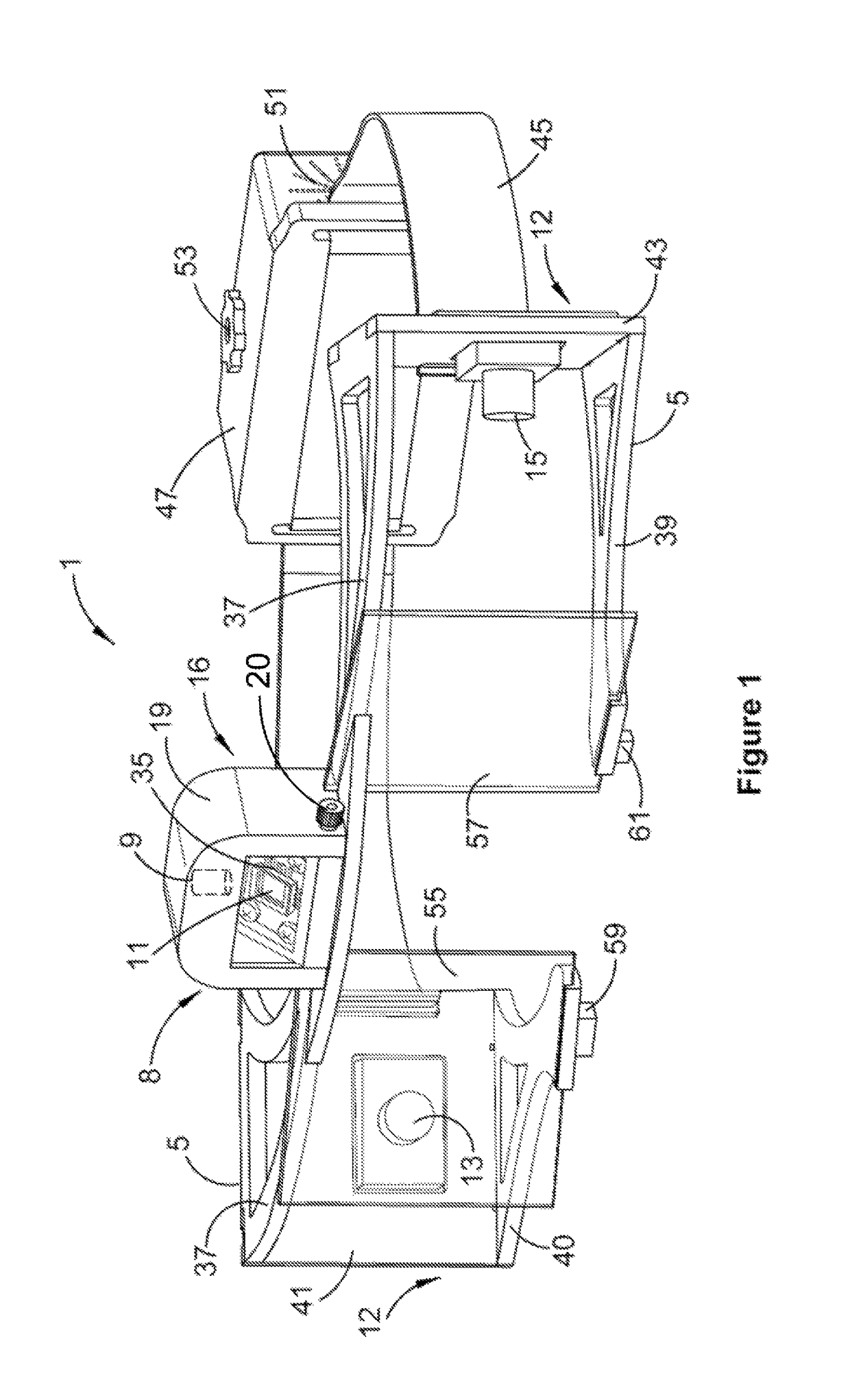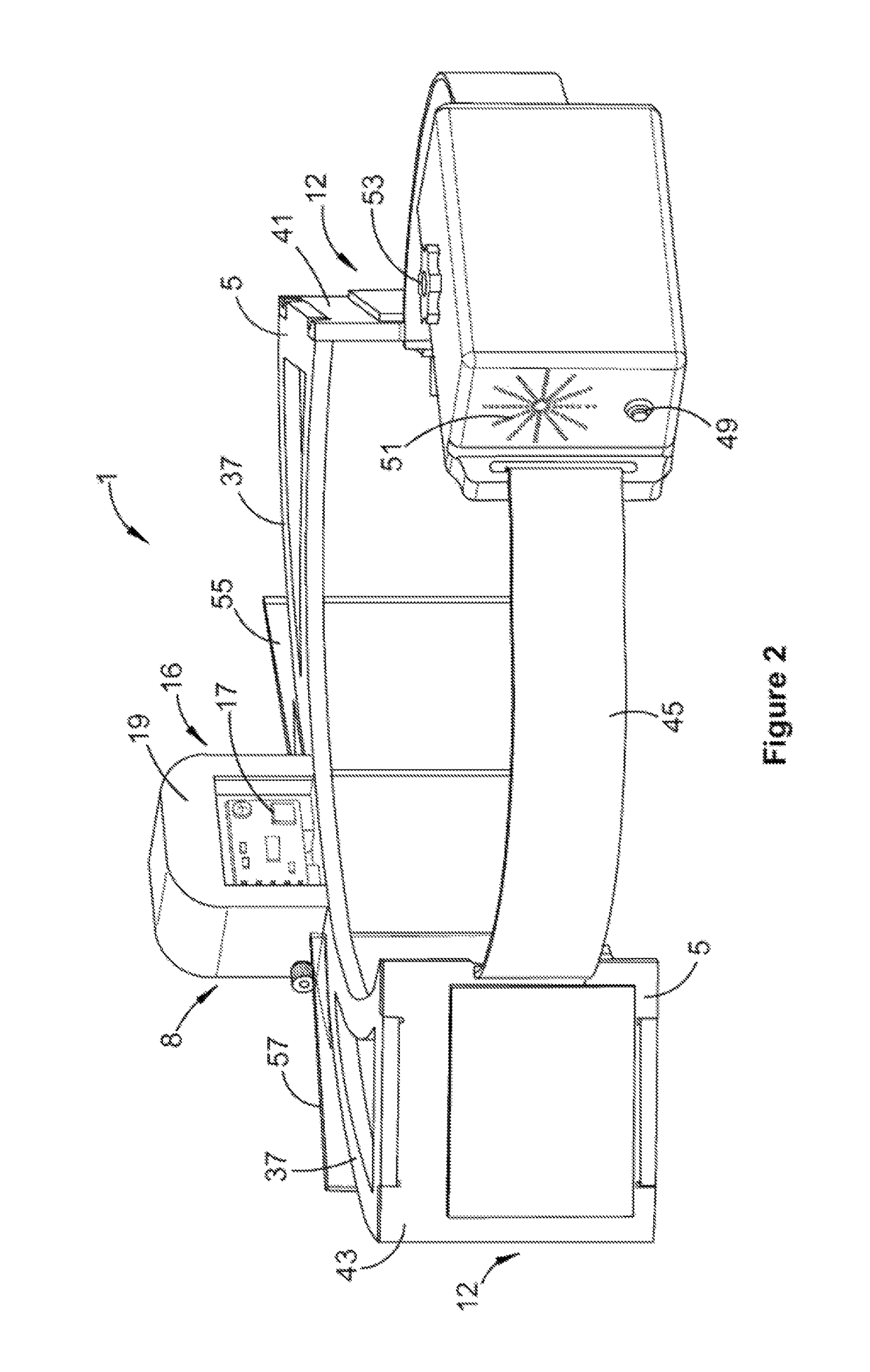Systems and methods for diagnosis and therapy of vision stability dysfunction
a vision stability and dysfunction technology, applied in the field of systems and methods for the diagnosis and treatment of vision stability dysfunction, can solve the problems of permanent debilitation and even death, loss of balance in humans, and inability to maintain stable vision during head movement,
- Summary
- Abstract
- Description
- Claims
- Application Information
AI Technical Summary
Benefits of technology
Problems solved by technology
Method used
Image
Examples
Embodiment Construction
Overview of Headwear Device
[0069]Referring to FIGS. 1 to 5, there is illustrated a device 1 for obtaining data from a patient 3. The device is particularly adapted for diagnosis and rehabilitation in relation to the retinal image stability and vestibulo-ocular reflex (VOR) of the patient. As such, device 1 will be described herein with reference to this application. However, it will be appreciated that device 1 is also compatible with other applications.
[0070]Device 1 includes a frame 5 configured for mounting to patient 3, about the patient's head 7. An internal target module 8, including a laser 9 and electro-mechanically tiltable mirror 11, is responsive to a drive signal to define a selectively movable target object. An eye tracking module 12, in the form of a pair of eye-monitoring cameras 13 and 15, is mounted to the frame, and is adapted for obtaining first data indicative of one or more motion characteristics of the patient's two eyes (hereinafter referred to as eye motion d...
PUM
 Login to View More
Login to View More Abstract
Description
Claims
Application Information
 Login to View More
Login to View More - R&D
- Intellectual Property
- Life Sciences
- Materials
- Tech Scout
- Unparalleled Data Quality
- Higher Quality Content
- 60% Fewer Hallucinations
Browse by: Latest US Patents, China's latest patents, Technical Efficacy Thesaurus, Application Domain, Technology Topic, Popular Technical Reports.
© 2025 PatSnap. All rights reserved.Legal|Privacy policy|Modern Slavery Act Transparency Statement|Sitemap|About US| Contact US: help@patsnap.com



